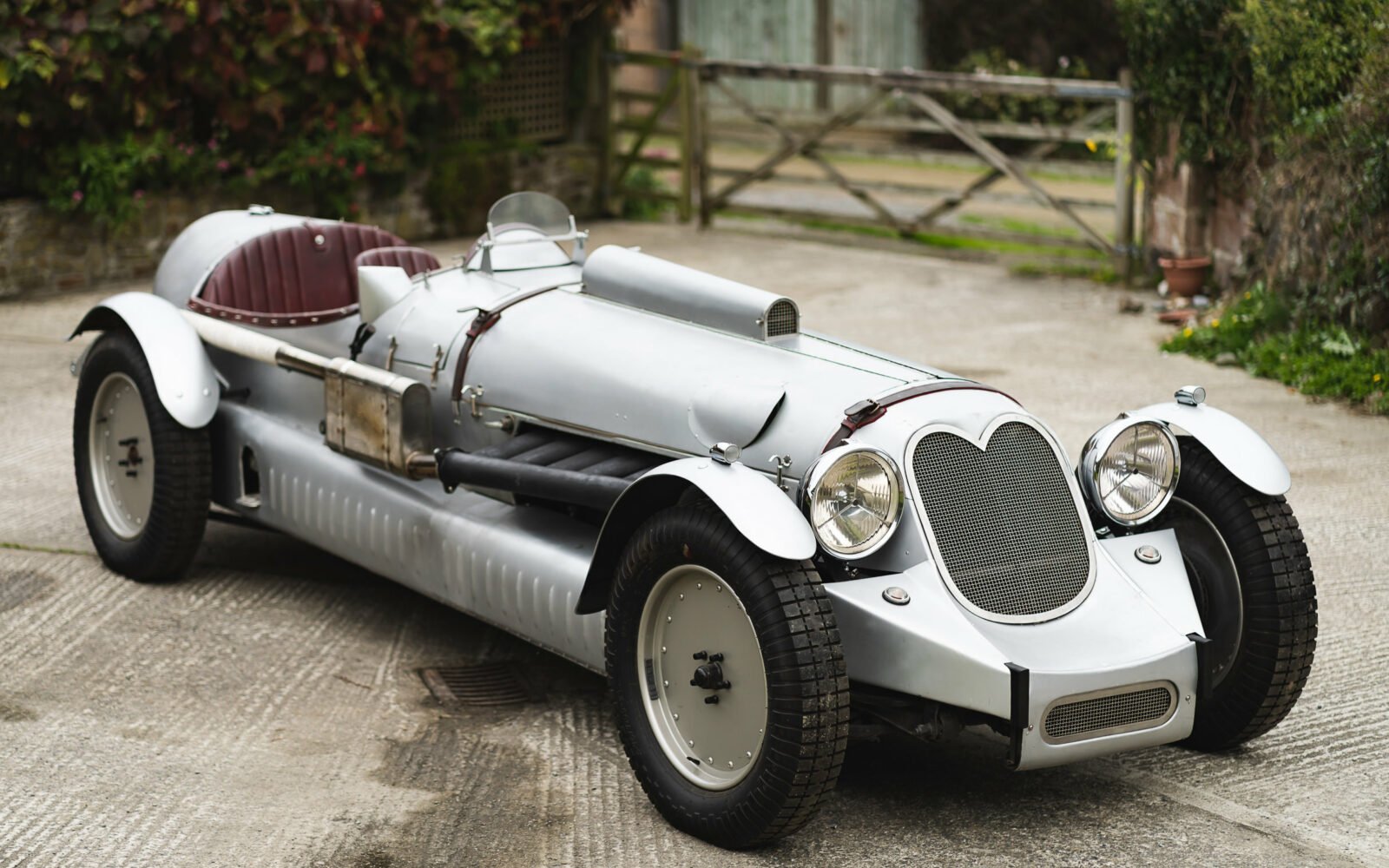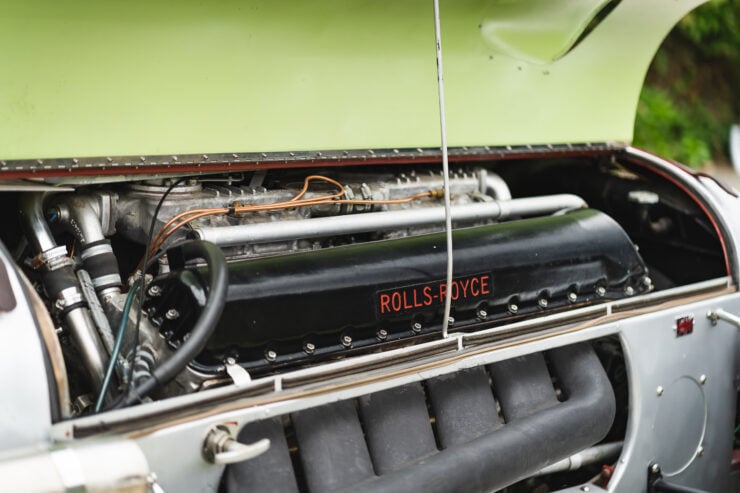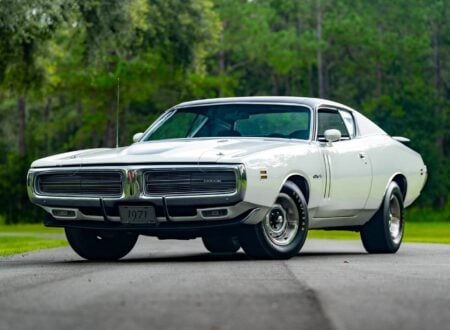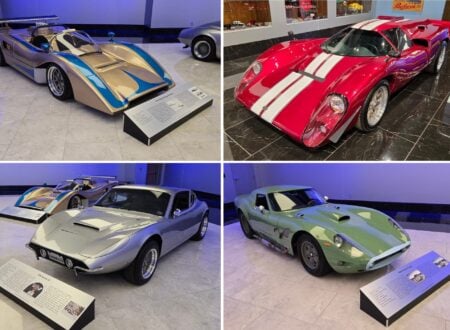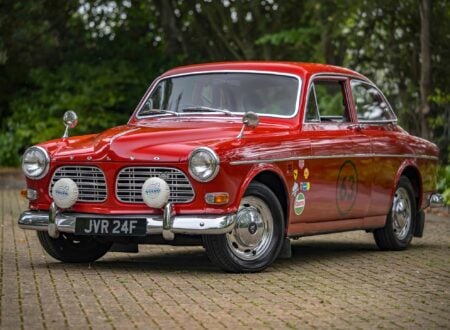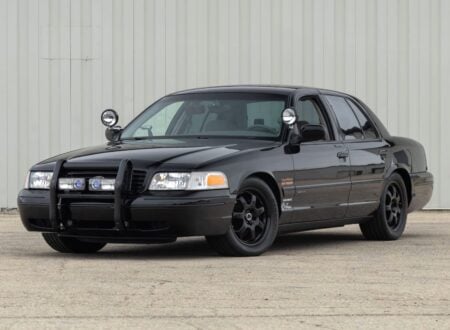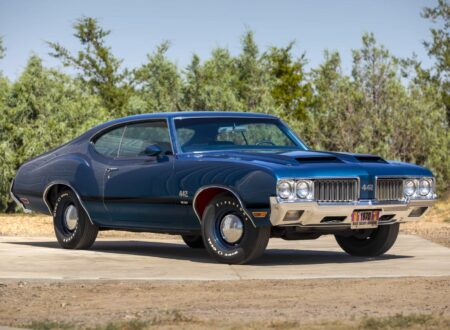This is the Meteor 27 Litre V12 Special, it’s powered by a WWII-era Meteor V12 tank engine – the unsupercharged version of the Merlin aero engine from the Spitfire.
There are a number of Meteor and Merlin-powered cars in the world, Jay Leno famously has one, and they offer a unique driving experience due to the extraordinary torque of their engines – for example this car produces a dyno-tested 1,449 lb ft.
Fast Facts – The Meteor 27 Litre V12 Special
- The Meteor 27 Litre V12 Special project began in Cape Town, South Africa in 2001 after the owner saw the Handlye Special owned by Robin Beech in Sussex, a car powered by a 27-litre, unsupercharged Merlin V12.
- He developed his own steel double ladder, cross-braced chassis and sourced a 27 liter Meteor tank engine that had originally been fitted to a Centurion tank that had been sent to South Africa in 1952.
- Jaguar XJ12 was fitted front and back, along with Jaguar XJ12-sourced power ventilated disc brakes and power steering. The completed car has front/back weight distribution of almost 50/50.
- The Meteor Special is now operation and driving, it does need some final finishing and fettling including some further development and a final coat of paint.
The Rolls-Royce Meteor V12 Engine
The Rolls-Royce Meteor engine was developed directly from the earlier Merlin V12 aero engine, the famous power unit used in aircraft like the Spitfire, Hurricane, Mosquito, Lancaster, and even in the North American P-51D Mustang in Packard-built form.
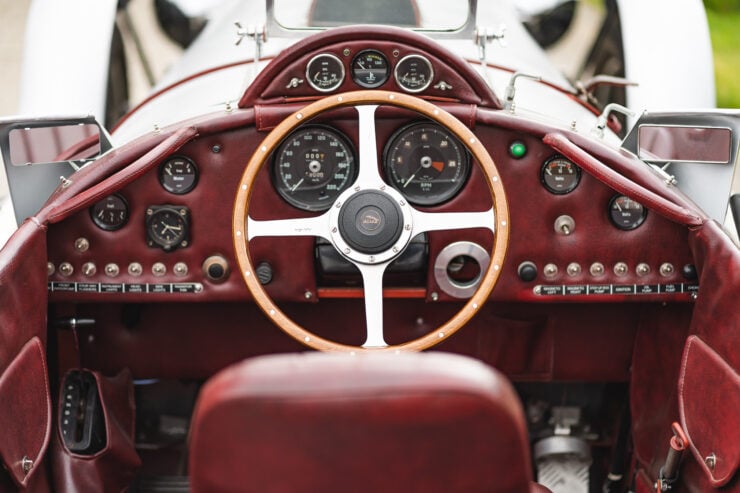

The secret to the high altitude success of the Merlin was its centrifugal supercharger, however this wasn’t needed at sea level if the engine was to be used in armored fighting vehicles.
During WWII Rolls-Royce executive W. A. Robotham was assigned to work on creating a tank-appropriate engine from either the Rolls-Royce Kestrel or the Rolls-Royce Merlin V12, he ultimately chose the Merlin as it was a more advanced design that produced more power for its weight.
Working with a small team that included engineers from Rolls-Royce and Leyland, Kestrel removed the supercharger and simplified the engine.
Engine failures in aircraft can be a death sentence but this is less of an issue in tanks, so many parts deemed unsuitable for aircraft use could still find a home in a Meteor – making good use of supplies when they were particularly constrained during the war.
The production version of the Meteor V12 proved reliable and powerful, generating between 550 and 650 bhp with torque of over 1450 lb ft – ideal for use in heavy armored fighting vehicles.
Meteor engines would be fitted to a slew of tanks including the Cromwell, Challenger, Avenger, Comet, Centurion, Charioteer, Tortoise (an experimental assault tank), Caernarvon (used to train crews for the Conqueror), and the Conqueror.
The Meteor engine itself would remain in production from 1941 to 1964, and many remain in operational condition today in private hands.
Meteor 27 Litre V12 Special Shown Here
The car you see here is the only example of its kind in the world, it was designed and built after its owner saw the Handlye Special in England, a car powered by an unsupercharged Merlin V12.
After returning home to South Africa the project began in earnest after unsuccessfully searching for a suitable Rolls-Royce or Bentley chassis he instead opted to design his own, using a double ladder, cross-braced design for strength.
A Meteor engine was sourced from a Centurion tank that had been sent to South Africa in 1952, and it was sent to Flight Engineers in England for a full rebuild, after which it was dyno tested and shown to produce 631 bhp and 1,449 lb ft of torque with fuel consumption of approximately 5 to 10 mpg.
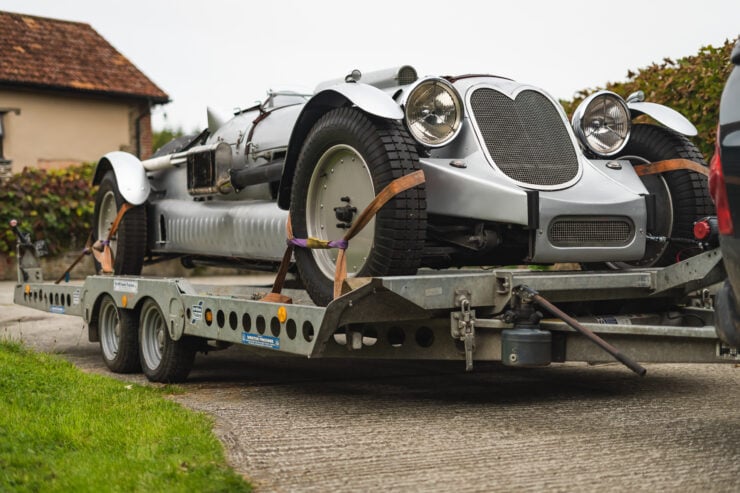

The chassis then had suspension from the Jaguar XJ12 fitted, along with its ventilated power disc brakes and power steering, a GM TH400 automatic transmission was also fitted however it was first rebuilt with drag racing internals for strength.
The car was given 21″ custom made wheels and Blockley tires and it’s geared for a theoretical top speed of 204 mph. A 1930s style body was made from handcrafted aluminum panels on top of a Superleggera-like steel framework.
Unusually the driving position is in the middle of the car, this offers the best visibility and it also means the car will be equally at home in left and right hand drive countries. Behind the central driver’s seat are two passenger seats, so the car shares the same layout as the McLaren F1.
The car was driven on the beach at the Saunton Sands Golden Mile in 2018 where it reached a speed of 80 mph in first gear, it was then later run at the Bristol & Bath Show.
It now needs some final finishing work applied and a good final coat of paint, and this will be up to the new owner to complete as it’s due to roll across the auction block with Historics Auctioneers on the 26th of November with a price guide of £75,000 – £95,000, which is approximately $86,900 – $110,000 USD.
If you’d like to read more about the car or register to bid you can visit the listing here.
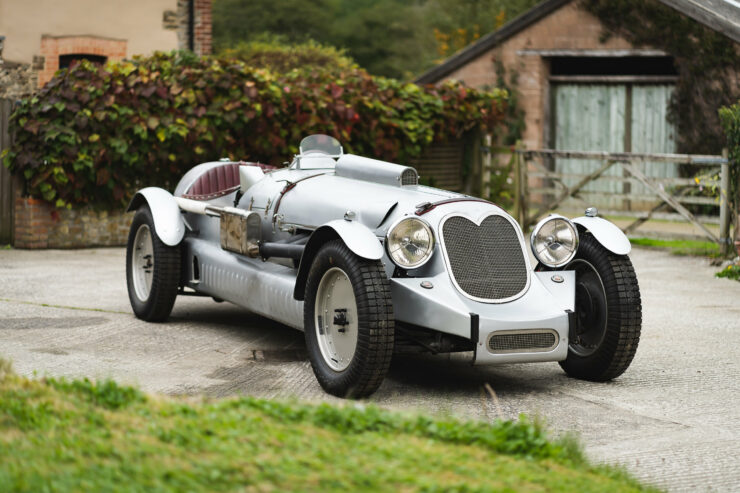
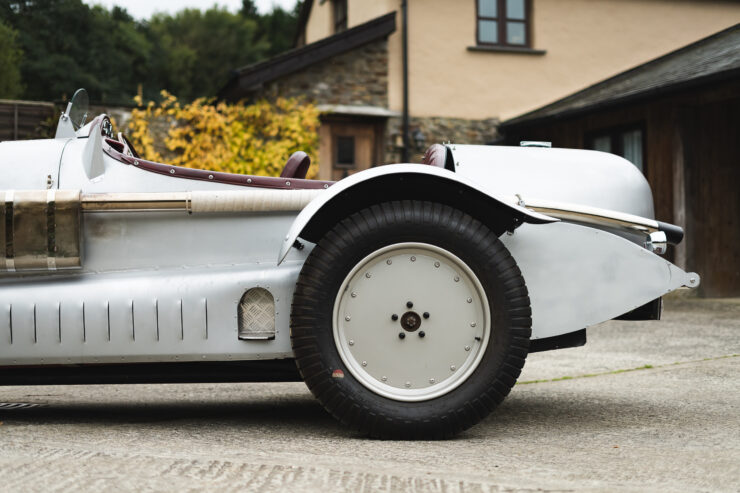
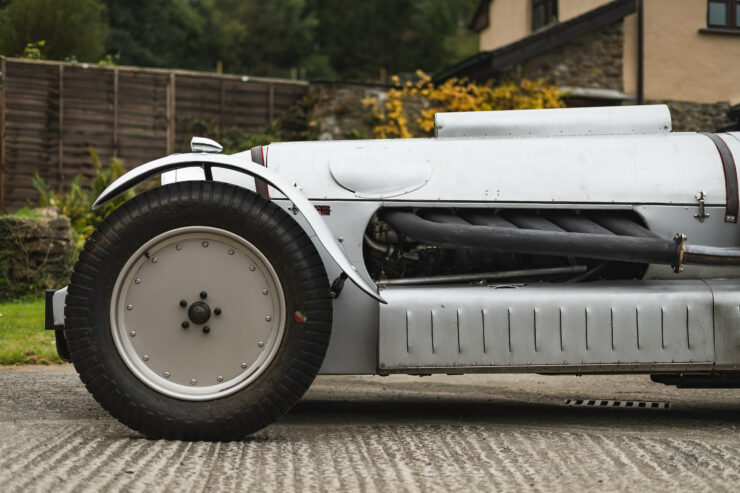

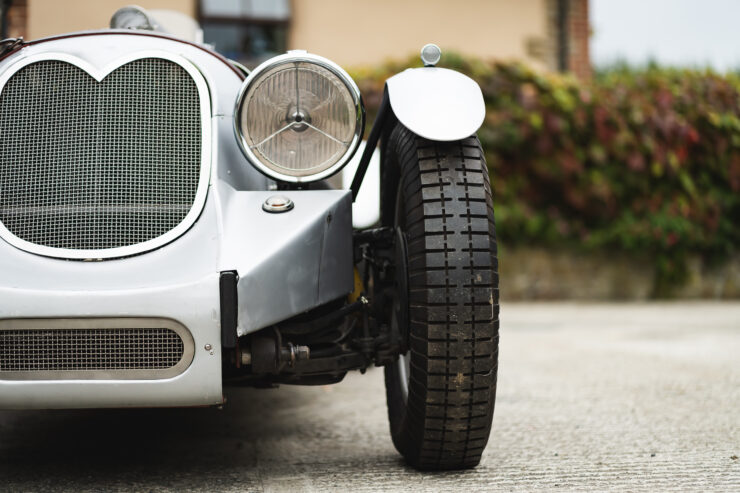
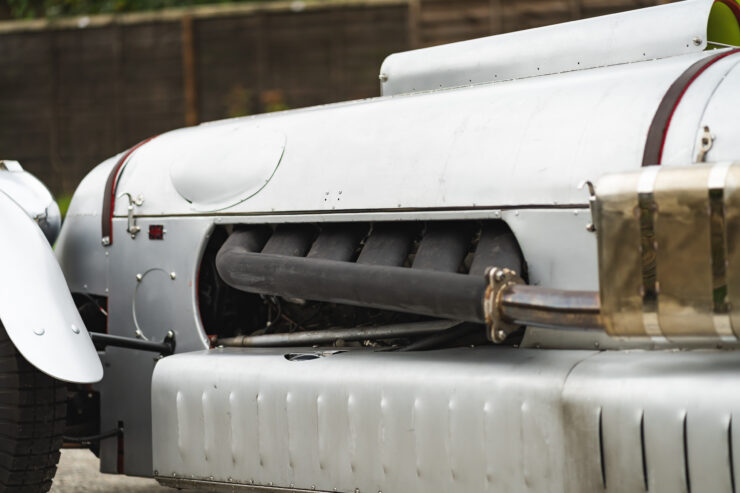
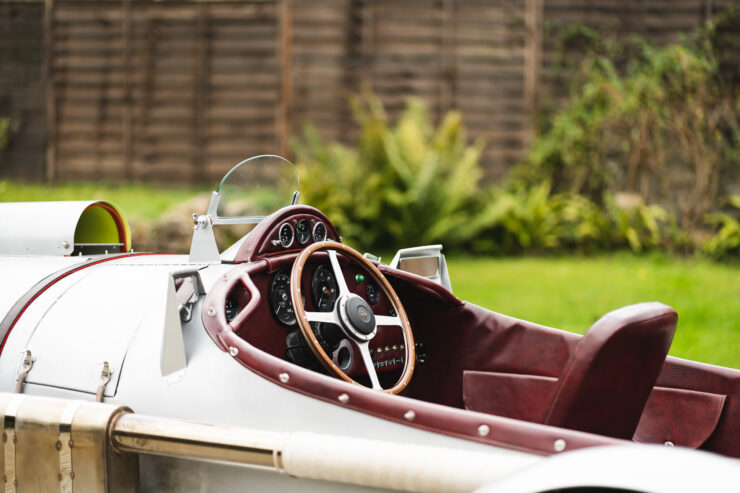

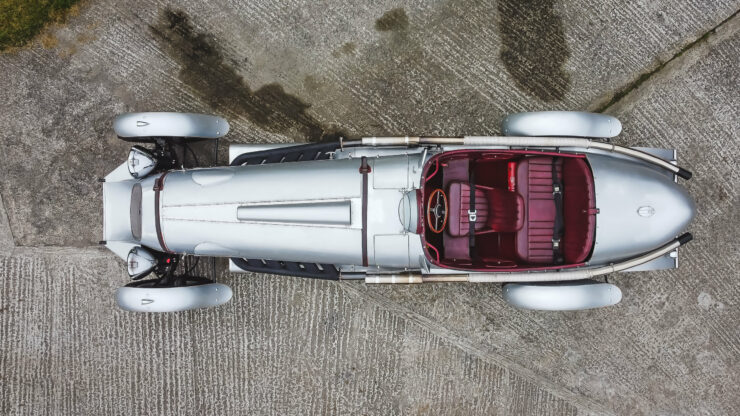
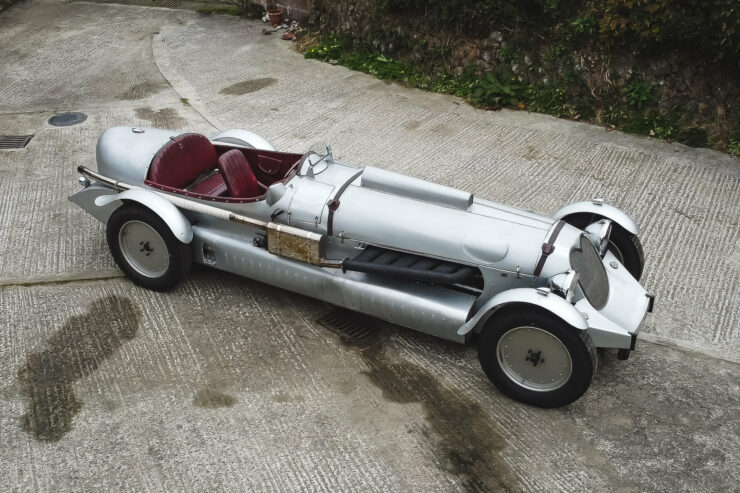
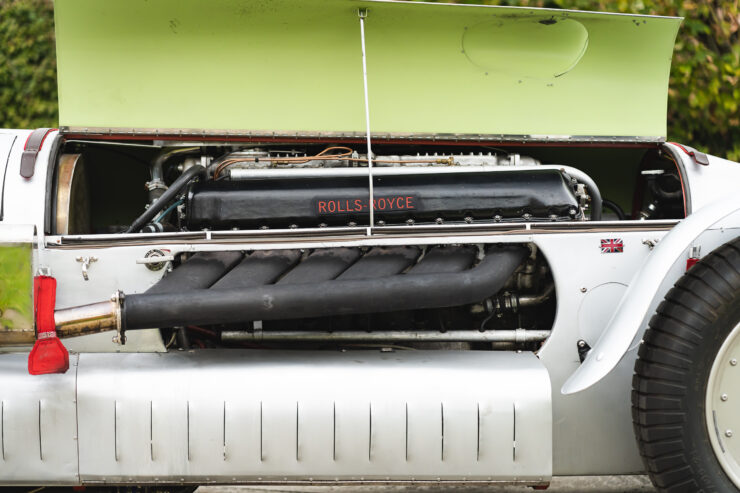
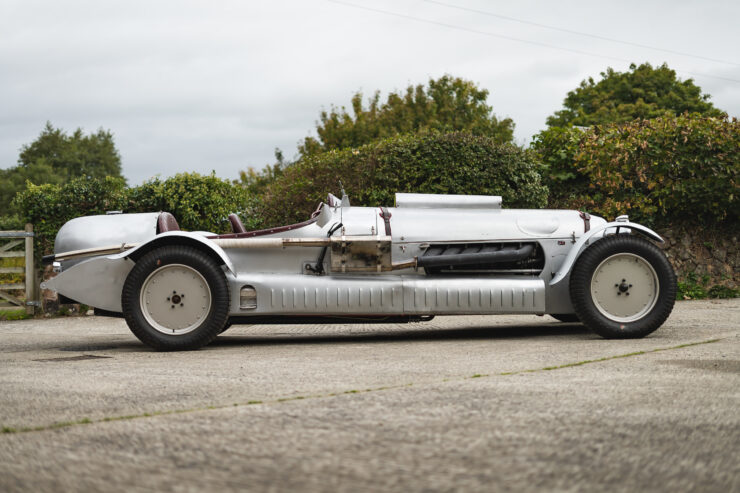
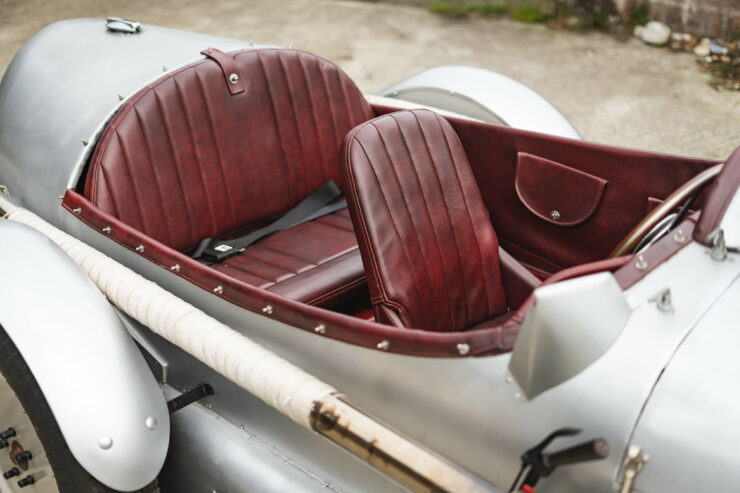
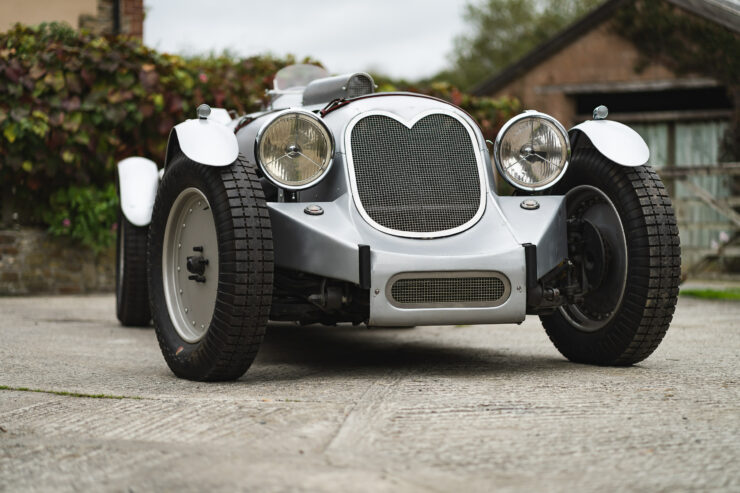
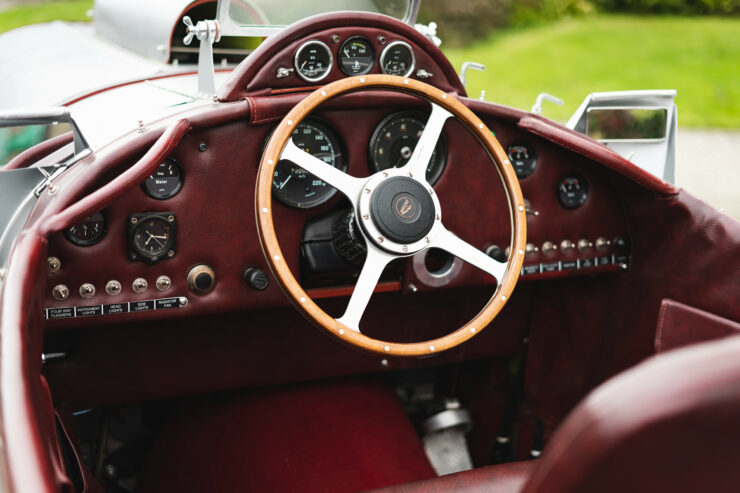
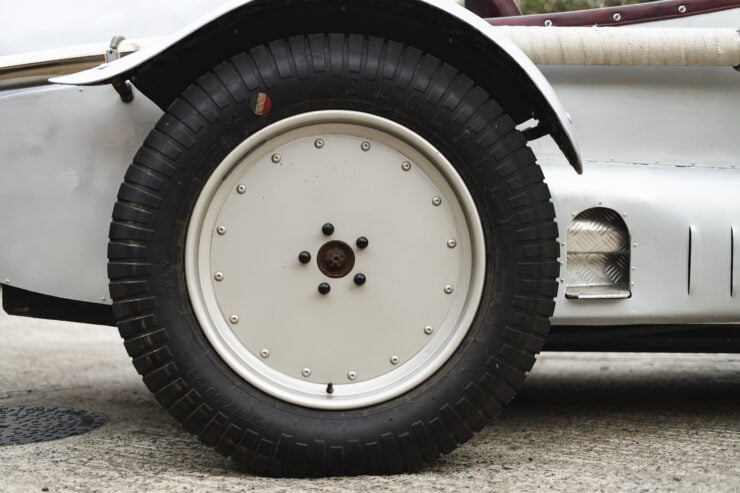
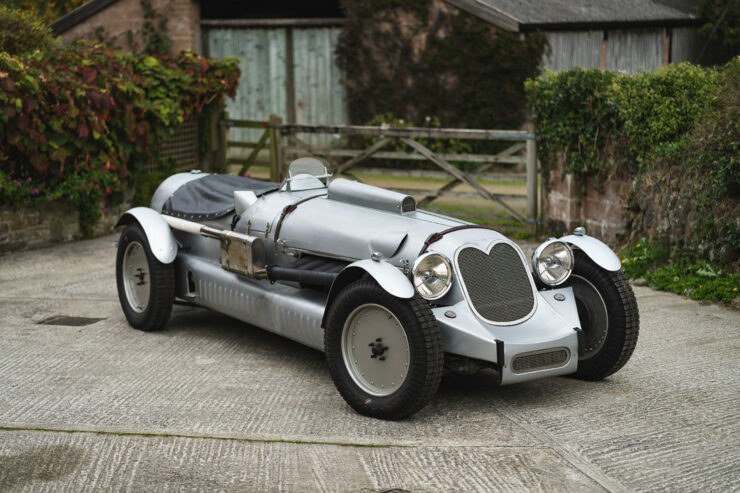

Images courtesy of Historics Auctioneers

